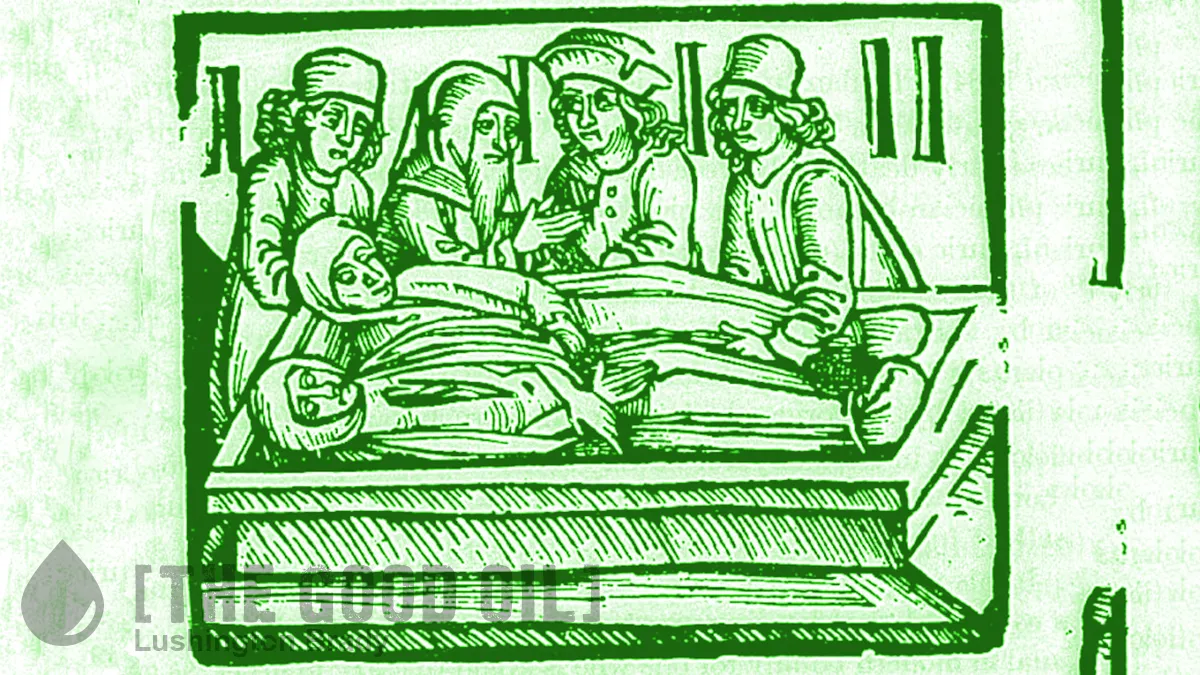Few things alarm us more than the threat of plague. After all, consider the unhinged panic that swept even the medical profession when a novel respiratory virus emerged in China in 2020. As one medical insider has commented, the near-universal reaction of doctors and nurses was little short of hysteria.
In many respects, modern humanity is little better than our ancient forebears who lived in mortal terror of what they were convinced was divine retribution. Whether the arrows of an angered Apollo or the nefarious workings of Sumerian demons, plagues seemed to strike from nowhere.
And, occasionally, vanish into nowhere.
In the late 15th century, the ‘sweating sickness’ appeared suddenly after Henry Tudor’s victory in the Wars of the Roses. Its symptoms were as alarming as its mortality – between 30 per cent and 50 per cent. Chills, fever, headaches and drenching sweat struck with astonishing suddenness. In repeated outbreaks over the next hundred years, thousands died. Then the disease apparently just vanished.
The emergence of sweating sickness dovetailed with the rise of the Tudors, and would come to define the family’s reign in more ways than one.
Mention of the “sweat” was first documented in the early 1480s. According to the National Library of Medicine, the Dutch scholar Erasmus reported on it in 1483, and a similar disease was recorded in northeast England in June 1485.
Shortly before the Battle of Bosworth Field that August, Lord Stanley reportedly excused himself and his men from the fight by claiming they had the “sweat.”
In fact, Stanley just switched sides from King Richard III to Henry Tudor. Controlling more than a third of the king’s army, Stanley’s betrayal was fatal to Richard’s cause. Henry took the throne as King Henry VII.
The battle was hardly over when Henry’s troops started to suffer from “the sweat.” Whether it came from French mercenaries in Henry’s ranks or from Rhodes much earlier is unknown. But the danger of the disease quickly became clear. Those who contracted it suffered from headaches, delirium, chills, and relentless sweat.
Besides the sweat, the really terrifying aspect of the disease was its swiftness. Within 24 hours, a third to half of sufferers died.
“A newe Kynde of sickness came through the whole region,” one commentator recalled, according to The New England Journal of Medicine, “which was so sore, so peynfull, and sharp, that the lyke was never harde of to any mannes rememberance before that tyme.”
Another commentator grimly remarked that “there were some dancing in the court at nine o’clock who were dead by eleven,” according to The Sweating Sickness in England by Francis C Webb.
Within a few months, 15,000 people died. The outbreak passed by the end of October 1485. But the mysterious sweating sickness was far from done.
Outbreaks took place in 1508, 1517, 1528, and 1551. Henry VII’s son and heir, Arthur, is believed to have died from the sweating sickness just before his 16th birthday in 1502.
This put Arthur’s younger brother, Henry, in line to be king. And it meant that Henry would marry Arthur’s bride, Catherine of Aragon. Henry VIII became king in June 1509, in between sweating sickness outbreaks in 1508 and 1517.
Though those outbreaks were more mild than in 1485, sweating sickness returned with a vengeance in 1528.
“This disease… is the easiest in the world to die of,” French ambassador Cardinal du Bellay wrote from London in June 1528. “You have a slight pain in the head, and at the heart; all at once you begin to sweat. There is no need for a physician… you are taken off without languishing.”
London became a kind of 16th-century Wuhan: in 1528, the disease was reported in Germany, Belgium, Scandinavia, Lithuania, Poland, the Netherlands and Russia. The last apparent outbreak came in 1551. Then, apart from a possible variant some 150 years later in Picardy, the sweating sickness seemingly vanished as suddenly and mysteriously as it appeared.
Even today, researchers are unsure what the disease was, or what caused it. Let’s just hope that Anthony Fauci or his Chinese cronies don’t get any bright ideas, though.









